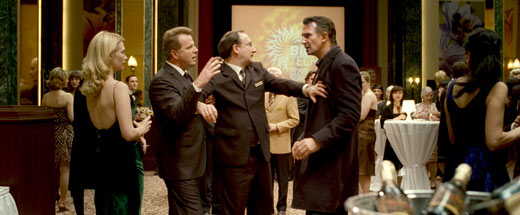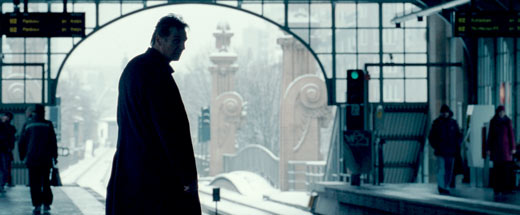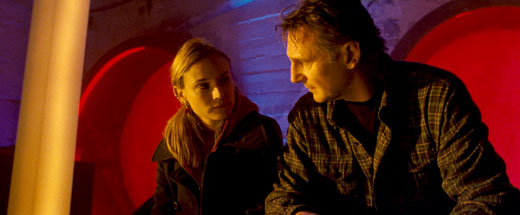Cinematographer Flavio Labiano on Flashbacks in Two Film Formats
The look of Unknown was determined in part by the decision to shoot in Berlin in the winter. The production ran for 48 days during the time of year when daylight begins as late as 9 a.m. and is all but gone by 3 p.m. “It was a challenge, and the weather was incredibly cold at times,” says Labiano. “A scene in the river had to be postponed until the ice, which hadn’t frozen over in 30 years, thawed. But I think shooting in Berlin in the winter really helped underscore the drama and put the audience in the character’s mindset.”

“After extensive pre-production testing, we decided to try something new,” he says. “We shot with a 35mm camera and a Super 16 camera side by side, with a prism redirecting the same image to each camera. We captured two identical images ‘ one with a standard 35mm setup, and one underexposed image on reversal film. We used a nonstandard shutter angle and force-processed and cross-processed the Super 16 image, which resulted in a broken but beautiful, dreamy kind of image. We used Flame software in post to affect the images a bit more. We combined the two images in post, and sometimes quickly flash-cut between the two.
“I was pleased with the result,” says Labiano. “Hopefully, it puts the audience inside Martin Harris’ brain, so to speak. Harris and the audience are both trying to solve this puzzle. So often you see an effects technique that comes from a software program, and suddenly it’s everywhere – on a music video tonight and in a beer commercial tomorrow. This was really a technique we designed for this exact purpose, and because it was an in-camera technique, it’s more organic.”

Labiano used ARRI cameras and KODAK VISION3 500T Color Negative Film 5213. “Berlin’s cloudy, overcast skies and short days meant a 500-speed film was a necessity,” he says. “I wouldn’t have tried out a digital format given the extreme weather conditions we faced, including -27 degrees Celsius temperatures. Also, film reacts in a very beautiful way to the soft, low light you get on a cloudy day. For some reason, under those conditions, the separation of colors is especially subtle and lovely.”
Technicolor handled the DI in London. Labiano spent three weeks perfecting the timing and matching shots from various times and places.

Crafts: Shooting
Sections: Creativity Technology
Topics: Feature Project/Case study
Did you enjoy this article? Sign up to receive the StudioDaily Fix eletter containing the latest stories, including news, videos, interviews, reviews and more.









Leave a Reply